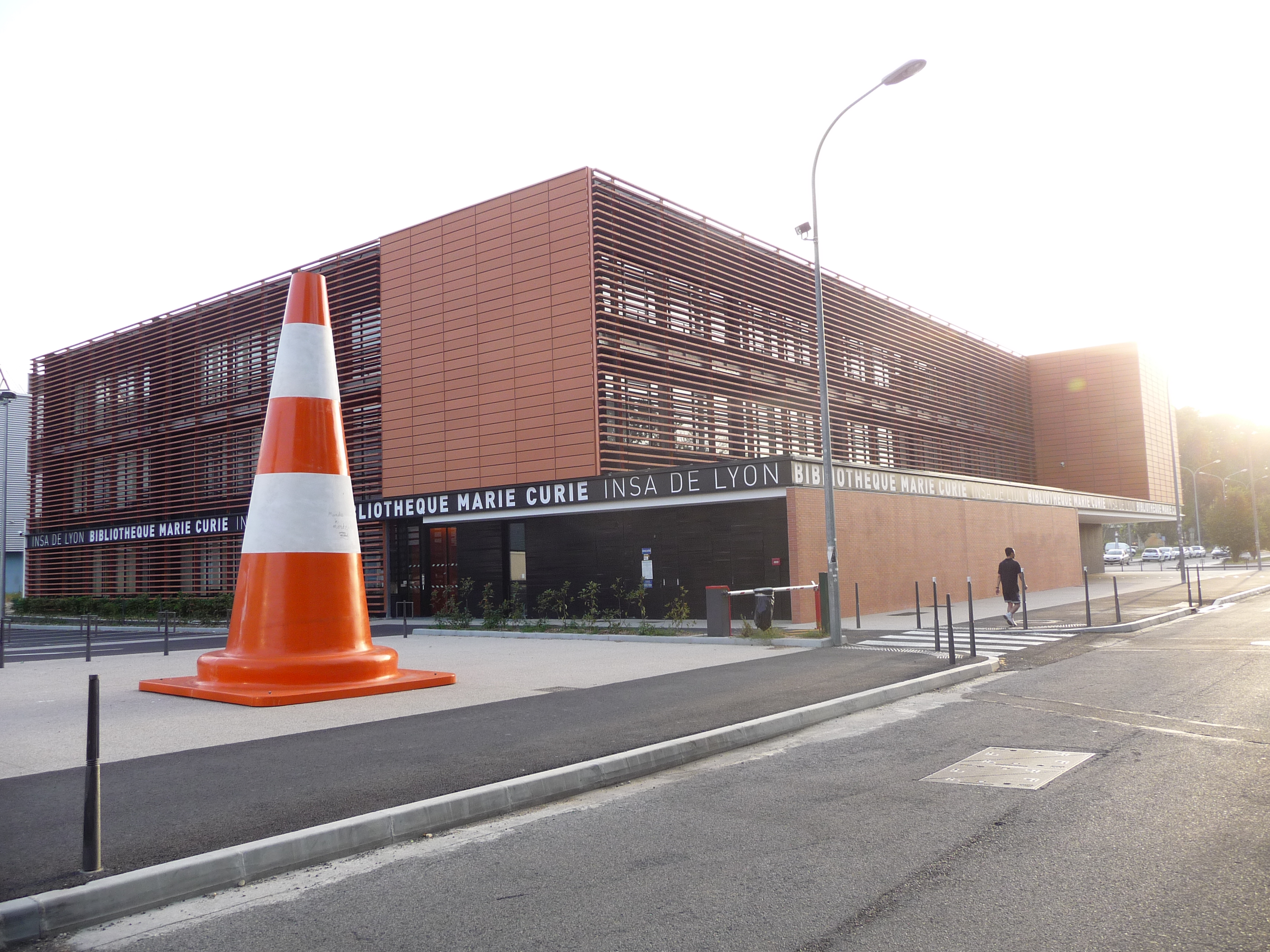Team:INSA-Lyon
From 2010.igem.org
m |
m |
||
| Line 10: | Line 10: | ||
| - | <div class="colonnedroite" style="text-indent: 20px; background:white; color:#7F5217; border-bottom: 1px solid #7F5217; margin-bottom: - | + | <div class="colonnedroite" style="text-indent: 20px; background:white; color:#7F5217; border-bottom: 1px solid #7F5217; margin-bottom: -25px;"> |
<p><strong>Latest news ...</strong></p> | <p><strong>Latest news ...</strong></p> | ||
</div> | </div> | ||
| Line 27: | Line 27: | ||
</div> | </div> | ||
| - | <div class="colonnedroite" style="margin-bottom: - | + | <div class="colonnedroite" style="margin-bottom: -25px;"> |
<p style="text-indent:0; text-align:justify;"><span style="color:#7F5217;"><em>8 / 25 </em></span><a href="http://www.mozilla.com/en-US/"><img style="width:15px; height:15px;" src="http://icones.eee-pc.fr/icones/firefox3.png" alt="firefox" /></a> To fully enjoy our wiki, we recommend you to use Firefox as web browser. | <p style="text-indent:0; text-align:justify;"><span style="color:#7F5217;"><em>8 / 25 </em></span><a href="http://www.mozilla.com/en-US/"><img style="width:15px; height:15px;" src="http://icones.eee-pc.fr/icones/firefox3.png" alt="firefox" /></a> To fully enjoy our wiki, we recommend you to use Firefox as web browser. | ||
<a href="http://www.mozilla.com/en-US/">Get it now !</a></p> | <a href="http://www.mozilla.com/en-US/">Get it now !</a></p> | ||
| Line 33: | Line 33: | ||
| - | <div class="colonnedroite" style="margin-bottom: - | + | <div class="colonnedroite" style="margin-bottom: -25px;"> |
<p style="text-indent:0; text-align:justify;"><span style="color:#7F5217;"><em>8 / 25 </em></span> The Wiki is open, but still under construction.</p> | <p style="text-indent:0; text-align:justify;"><span style="color:#7F5217;"><em>8 / 25 </em></span> The Wiki is open, but still under construction.</p> | ||
</div> | </div> | ||
| Line 43: | Line 43: | ||
| - | <div class="colonnedroite" style="text-indent: 20px; background:white; color:#7F5217; border-bottom: 1px solid #7F5217; margin-bottom: - | + | <div class="colonnedroite" style="text-indent: 20px; background:white; color:#7F5217; border-bottom: 1px solid #7F5217; margin-bottom: -25px;"> |
<p><strong>Countdown</strong></p> | <p><strong>Countdown</strong></p> | ||
</div> | </div> | ||
| Line 55: | Line 55: | ||
| - | <div class="colonnedroite" style="text-indent: 20px; background:white; color:#7F5217; border-bottom: 1px solid #7F5217; margin-bottom: - | + | <div class="colonnedroite" style="text-indent: 20px; background:white; color:#7F5217; border-bottom: 1px solid #7F5217; margin-bottom: -25px;"> |
<p><strong>Map of visitors</strong></p> | <p><strong>Map of visitors</strong></p> | ||
</div> | </div> | ||
Revision as of 16:45, 25 August 2010
Latest news ...
Welcome on the iGEM 2010 INSA-Lyon Wiki !
We are students, advisors and instructors very motivated. We are involved for the first time in this international competition, but we'll do our best ! Our lab is located in the BioSciences Department of the National Institut of Applied Sciences (INSA) of Lyon.
The Wiki is still under construction, so don't be afraid if some texts or colors appear and disappear, this is not magic, we're just testing the html code !
8 / 25 ![]() To fully enjoy our wiki, we recommend you to use Firefox as web browser.
Get it now !
To fully enjoy our wiki, we recommend you to use Firefox as web browser.
Get it now !
8 / 25 The Wiki is open, but still under construction.
7 / 22 Thank you Groningen for sharing your code, you've been most helpful !
Countdown
Map of visitors
About iGEM
The International Genetically Engineered Machine (iGEM) is a competition organized by the Massachusetts Institute of Techology (MIT). It is the premiere undergraduate Synthetic Biology competition. Student teams are given a kit of biological parts at the beginning of the summer from the Registry of Standard Biological Parts. Working at their own schools over the summer, they use these parts and new parts of their own design to build biological systems and operate them in living cells. This project design and competition format is an exceptionally motivating and effective teaching method.
Project Description
The great majority of microbes, simply cultivated in their usual media, are able to synthesize considerable amounts of intracellular lipids and store these molecules into large droplets easily stainable and observable. These spherical inclusions are surrounded by a mono-layer of lipids with embedded or attached proteins. To our knowledge, these lipid droplets (or "granules") had never been observed in wild-type E. coli strains. But recombinant strains have been constructed by cloning the genes responsible for the production of poly-hydroxybutyrate (PHB), an insoluble polyester, and these molecules were deposited into granules (with the diameter usually ranging between 100 and 500 nm and 5-10 granules per cell). These recombinant bacteria are able to accumulate as much as 80% of their dry weight in PHB.
Considering this very important result, the working hypothesis at the origin of our project is that E. coli (and maybe any cell) is able to produce granules when large amounts of hydrophobic molecules are synthesized.
In a first step, we will test this hypothesis by constructing E. coli strains which produce other hydrophobic molecules and examining granule synthesis. For this, we intend to construct a new part : a strong promoter sensitive to the shaking speed of the water bath in which the bacteria are cultured. Our objective is to trigger lipid synthesis and granule production just by varying this shaking speed.
The second step of our project is the use of the PHB granules as a tool to produce and purify recombinant proteins. Various proteins, such as phasins, are attached to the external surface of the granules. Our objective is to construct a part able to target proteins of interest to this surface. Moreover, in order to facilitate purification, the sequence of a self-cleaving protein (intein) will be added to this part.
In addition, we intend to develop a modelisation project. In plants and bacteria, the reactions involved in fatty acid synthesis are catalyzed by separate monofunctional enzymes. But in animals, evolution has done synthetic biology and the different enzymes are integrated into a single multifunctional polypeptide in which substrates are handed from one functional domain to the next. We have begun to analyse the work of evolution in animals in order to design multifunctional bacterial enzymes that integrate discrete monofunctional enzymes. We hope that these enzymes could promote the synthesis of particular lipids, such as tri-acyl glycerols, and store these molecules into granules.
 "
"



